Key Takeaways
- Strategic Niche Definition: Discover the art of defining a niche strategically, reducing competition, and honing in on a market segment tailored to your strengths and audience needs for online success in 2024.
- Data-Driven Decision-Making: Leverage data and market insights to make informed decisions, analyze trends, evaluate competition, and assess profitability—key pillars for navigating the dynamic landscape of online business in 2024.
- Brand Building for Resilience: Harness the power of brand building to create a lasting identity, differentiate your business, and foster customer loyalty. Craft compelling stories, engage with influencers, and build communities for a resilient online presence in 2024 and beyond.
In the ever-evolving landscape of online business, finding your niche is the linchpin to unlocking unparalleled success.
As we step into 2024, the digital realm is more dynamic than ever, with shifting consumer behaviors and emerging trends shaping the way entrepreneurs carve their digital footprint.
Whether you’re a budding entrepreneur or looking to redefine your business strategy, understanding the intricacies of niche selection is crucial.
In this exhaustive guide, we delve into the core principles of identifying, validating, and thriving within your niche in 2024, ensuring your online business not only survives but thrives in the competitive digital marketplace.

The Crucial Role of Niche Selection in Online Business
Choosing the right niche is not just a pivotal decision but a strategic imperative for online success in 2024.
Niche selection goes beyond mere product or service offerings; it involves aligning your passion and expertise with market demands.
A well-defined niche not only helps you stand out amidst the digital noise but also creates a dedicated audience base that is more likely to convert.
As we navigate the nuances of niche selection, it’s essential to understand the ever-changing dynamics of the online business ecosystem and the role it plays in shaping the path to prosperity.
Evolving Market Trends: A Glimpse into 2024 and Beyond
In this section, we explore the currents and undercurrents of the current market trends, providing insights into the pulse of consumer behaviour.
As technology continues to shape the way people interact and transact online, staying abreast of these trends is indispensable for any online entrepreneur.
With a focus on 2024, we analyze the market shifts that are likely to define the digital landscape and guide you on aligning your business with the currents of consumer preferences.
Harnessing Personal Passion and Expertise in Niche Selection
Your online business journey begins with introspection. Identifying your passion and expertise lays the foundation for a sustainable and fulfilling venture.
In this segment, we guide you through a process of self-discovery, helping you pinpoint areas where your skills and passions intersect with market demands.
By understanding the intricacies of aligning personal interests with a viable market niche, you not only set the stage for a successful business but also embark on a journey that resonates with your authentic self.
But, before we venture further, we like to share who we are and what we do.
About AppLabx
From developing a solid marketing plan to creating compelling content, optimizing for search engines, leveraging social media, and utilizing paid advertising, AppLabx offers a comprehensive suite of digital marketing services designed to drive growth and profitability for your business.
AppLabx is well known for helping companies and startups use online marketing to drive web traffic to their websites and web apps.
At AppLabx, we understand that no two businesses are alike. That’s why we take a personalized approach to every project, working closely with our clients to understand their unique needs and goals, and developing customized strategies to help them achieve success.
If you need a digital consultation, then send in an inquiry here.
How To Find Your Niche For Your Online Business in 2024
- Understanding the Concept of a Niche
- Analyzing Market Trends in 2024
- Identifying Your Passion and Expertise
- Conducting Market Research
- Evaluating Competition
- Assessing Profitability
- Narrowing Down Your Niche
- Testing and Validating Your Niche
- Building Your Brand within the Niche
1. Understanding the Concept of a Niche
In the dynamic world of online business, the concept of a niche is more than just a buzzword; it’s a strategic cornerstone that can make or break your digital venture.
Let’s delve into the essence of what a niche is, why it matters, and how it shapes the online entrepreneurial landscape.

Defining a Niche and Its Relevance
A niche in the context of online business refers to a specialized segment of the market for a particular kind of product or service.
It’s about finding a unique and distinct space where your offerings meet the specific needs of a well-defined group of customers.
In 2024, where the digital marketplace is saturated with a myriad of options, carving out a niche is not just advantageous but often imperative.
Did you know?
As of October 2023, there were 5.3 billion internet users worldwide, which amounted to 65.7 per cent of the global population.
This staggering number underscores the vastness of the online marketplace and the need for businesses to find their niche to effectively connect with their target audience.
Relevance of a Niche in the Online Landscape
- Reducing Competition and Enhancing Visibility:
- In a sea of online businesses, having a niche helps reduce direct competition, making it easier for your brand to stand out. When you focus on a specific market segment, you can tailor your products or services to meet the unique needs of that audience.
- Building a Dedicated Customer Base:
- A well-defined niche allows you to connect with a more specific and dedicated audience. By addressing their unique pain points or desires, you build a loyal customer base that identifies with your brand.
Example: Consider the success of Dollar Shave Club. By targeting the niche of affordable, high-quality razors delivered to your door, they disrupted the shaving industry and quickly gained a dedicated customer following.
Examples
- Toms – Shoes with a Cause:
- Toms, the footwear company, not only carved a niche by offering comfortable and stylish shoes but also by incorporating a socially responsible business model. For every pair of shoes sold, Toms pledged to donate a pair to a child in need.
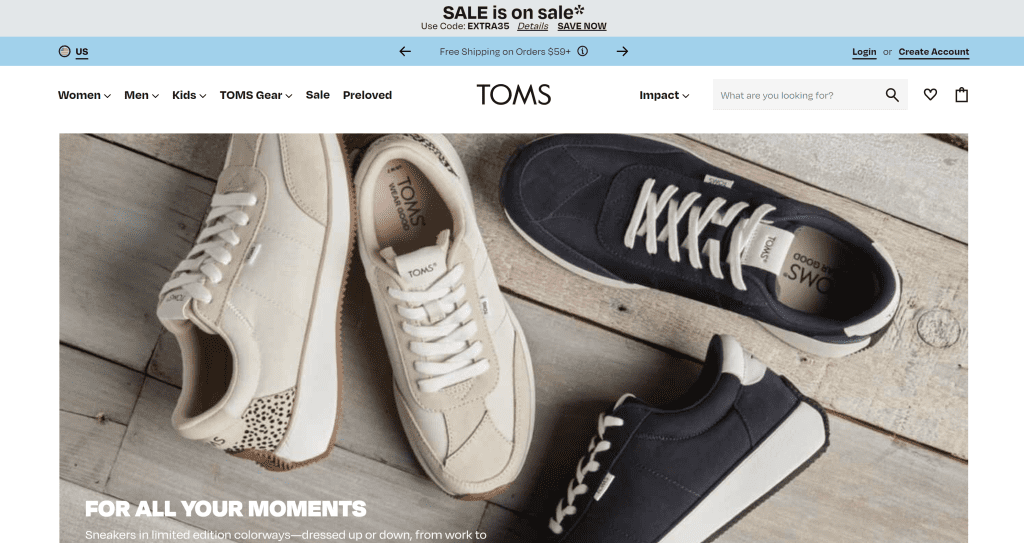
- Blue Apron – Simplifying Home Cooking:
- Blue Apron identified a niche within the culinary landscape. By delivering pre-portioned ingredients and step-by-step recipes, they tapped into the market of individuals seeking convenient yet home-cooked meals without the hassle of grocery shopping.
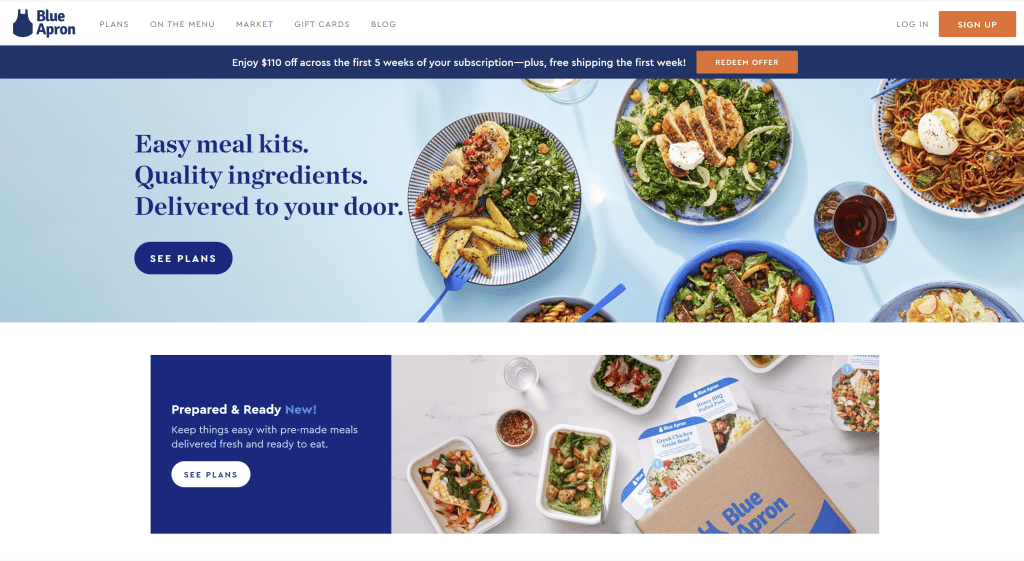
The Evolving Nature of Niches in 2024
The digital landscape is in a constant state of flux, and what constitutes a viable niche can change rapidly. As we step into 2024, understanding that niches evolve is paramount.
Emerging technologies, societal shifts, and changing consumer behaviours continually redefine what is considered niche-worthy.
In 2025, global e-commerce sales are forecast to rise to $6.9 trillion, before adding another $600 billion in 2026, to $7.5 trillion. This immense market size underscores the importance of finding a niche to navigate through the vastness of the online marketplace.
2. Analyzing Market Trends in 2024
In the fast-paced world of online business, staying ahead of market trends is not just beneficial; it’s a prerequisite for success.
As we step into 2024, understanding and adapting to the latest market trends is pivotal for making informed decisions that can propel your online business forward.

Overview of Current Market Trends
- Rise of E-commerce Dominance:
- In 2025, global e-commerce sales are forecast to rise to $6.9 trillion, before adding another $600 billion in 2026, to $7.5 trillion, showcasing the continued dominance of online retail.
The trend suggests that businesses need to establish a robust online presence and optimize their strategies for digital sales channels.
- In 2025, global e-commerce sales are forecast to rise to $6.9 trillion, before adding another $600 billion in 2026, to $7.5 trillion, showcasing the continued dominance of online retail.
- Growing Influence of Social Commerce:
- Social commerce is gaining momentum, with platforms like Instagram and Facebook integrating shopping features. Social commerce is expected to grow three times as fast as traditional e-commerce to $1.2 trillion by 2025.
- Recognizing and leveraging the power of social media for sales can be a game-changer for businesses seeking to tap into this burgeoning trend.
Tools and Resources for Staying Updated on Industry Trends
- Utilizing Google Trends:
- Google Trends is a powerful tool for monitoring the popularity of search queries over time. By exploring trending topics and search patterns, businesses can gain valuable insights into what is capturing the attention of their target audience.
- Subscription to Industry Newsletters:
- Subscribing to newsletters from industry experts and reputable sources keeps you abreast of the latest trends, innovations, and market shifts. Platforms like “The Hustle” and “CB Insights” provide curated content on emerging trends.

Identifying Target Audience and Their Needs
- Data-Driven Customer Persona Creation:
- Utilize data analytics tools to create detailed customer personas. Understanding your target audience’s demographics, preferences, and pain points helps tailor your products or services to meet their specific needs.
Example: The success of Spotify in the music streaming industry is partly attributed to its ability to analyze user data and provide personalized recommendations, creating a more engaging and user-centric experience.
- Monitoring Social Media Conversations:
- Social media platforms serve as a treasure trove of insights into customer sentiments and preferences. Actively monitor social media conversations, comments, and reviews to gauge audience feedback and identify emerging trends.
Tapping into Emerging Technologies
- Embracing AI and Chatbots:
- The integration of Artificial Intelligence (AI) and chatbots is revolutionizing customer interactions. AI-driven chatbots provide personalized assistance, streamline customer service, and enhance the overall user experience.
The global artificial intelligence market size is expected to reach USD 733.7 billion by 2027. Integrating AI technologies can position your business at the forefront of innovation.
- Blockchain in E-commerce:
- Blockchain technology is gaining traction in e-commerce for its ability to enhance transparency, security, and traceability. Businesses exploring blockchain applications can gain a competitive edge by offering enhanced trust and reliability to their customers.
Staying Agile in Response to Market Dynamics
- Agile Business Models:
- In a rapidly evolving market, businesses need to adopt agile business models. This involves the ability to quickly adapt to changes, experiment with new strategies, and pivot when necessary to stay aligned with market trends.
- Flexibility in Supply Chain Management:
- The disruptions caused by global events highlight the importance of a flexible supply chain. Businesses should reassess and optimize their supply chain strategies to ensure resilience and responsiveness to market fluctuations.
3. Identifying Your Passion and Expertise
In the quest to establish a thriving online business, the alignment of personal passion and expertise plays a pivotal role.
This section delves into the significance of self-discovery, how it contributes to a sustainable venture and provides insights into leveraging your passions for online success.

Assessing Personal Interests and Expertise
Self-Reflection and Personal Inventory: Begin by introspecting into your own interests and skills. What are the activities that you enjoy? What expertise do you possess?
This self-reflection is the foundation for identifying a niche that not only resonates with you but also positions you as an authority in your chosen field.
Employee engagement in the U.S. saw its first annual decline in a decade – dropping from 36% engaged employees in 2020 to 34% in 2021. Building a business around your passion can contribute significantly to your engagement and satisfaction.
Passion as a Driving Force: Passion is a powerful motivator. It fuels resilience and determination, crucial qualities for overcoming the challenges of entrepreneurship.
Identifying a niche that aligns with your passion ensures that the journey feels less like work and more like a fulfilling pursuit.
Example: The success of Elon Musk with SpaceX and Tesla is often attributed to his passion for space exploration and sustainable energy. Musk’s dedication to his interests has been a driving force behind the success of his ventures.

Aligning Passion with Market Demand
Researching Market Demand: While passion is essential, it’s equally important to validate it against market demand. Utilize tools like Google Trends, keyword research, and industry reports to understand if there’s a viable audience interested in your chosen niche.
Aligning your passion with market demand mitigates this risk and increases the likelihood of your business’s success.
Identifying Profitable Niches: Analyze the profitability of potential niches within your areas of interest. Tools like Semrush and Ahrefs can provide insights into keyword competitiveness and search volume, helping you gauge the financial viability of your passion-driven venture.
Finding a profitable niche within the vast e-commerce landscape can be a lucrative endeavour.
Balancing Passion, Market Demand, and Profitability
Creating a Venn Diagram of Alignment: Visualize the intersection of your passion, market demand, and profitability.
The sweet spot lies where these three factors overlap. Creating a Venn diagram can be a helpful exercise in visualizing the ideal niche for your online business.
Example: The success of fitness influencers on platforms like YouTube or Instagram often stems from their ability to merge their passion for health and wellness with market demand for fitness guidance, creating a profitable niche.
Considering Long-Term Commitment: Building a successful online business is a long-term commitment. Ensure that your chosen niche is not just a fleeting interest but something you can envision dedicating time and effort to for the foreseeable future.
The Impact of Passion-Driven Brands
Building Authentic Connections: Brands built on passion often resonate authentically with consumers. The emotional connection created through shared values and enthusiasm can lead to customer loyalty and positive word-of-mouth marketing.
Differentiating Your Brand: In a crowded digital marketplace, passion becomes a key differentiator. It sets your brand apart from competitors, making it memorable and distinctive in the minds of consumers.
4. Conducting Market Research
In the dynamic world of online business, informed decision-making is rooted in comprehensive market research.
This section explores the crucial steps involved in conducting effective market research for your online business in 2024, backed by relevant examples and up-to-date statistics.

Utilizing Online Tools for Market Analysis
Google Trends for Trend Analysis: Google Trends is an invaluable tool for gauging the popularity of search queries over time. By analyzing search trends, you can identify rising interests, understand seasonality, and stay ahead of shifts in consumer behavior.
Example: A study using Google Trends could reveal a surge in interest in sustainable living, prompting an entrepreneur to explore eco-friendly product offerings.
Semrush for Competitor Analysis: Semrush offers insights into competitors’ strategies, keywords, and overall online presence. Analyzing competitor data can unveil gaps in the market, helping you position your business uniquely.
Identifying Target Audience and Their Needs
Utilizing Customer Persona Tools: Tools like HubSpot and Make My Persona assist in creating detailed customer personas. Understanding your target audience’s demographics, preferences, and pain points is fundamental to tailoring your offerings effectively.
Example: If your target audience consists of tech-savvy millennials, incorporating cutting-edge technology into your product or service may be a key selling point.
Social Media Listening: Actively monitor social media platforms to glean insights into customer sentiments, opinions, and emerging trends. Tools like Brandwatch and Hootsuite can help you track brand mentions and relevant conversations.
72% of US adults use social media, making it a rich source of consumer insights.
Analyzing Industry Reports and Publications
Industry-Specific Reports: Leverage industry reports from reputable sources such as IBISWorld, Statista, and Forrester Research. These reports provide in-depth insights into market size, trends, and forecasts.
Academic Journals and Publications: Explore academic journals and industry publications for scholarly perspectives on market trends and emerging technologies. Platforms like JSTOR and Springer can be valuable resources.
Example: An academic study on the adoption of Artificial Intelligence (AI) in e-commerce may provide insights into future industry trends.
Understanding Consumer Behavior through Surveys and Interviews
Online Surveys for Quantitative Data: Platforms like SurveyMonkey and Google Forms enable the creation of online surveys to gather quantitative data. These surveys can help quantify consumer preferences, buying habits, and satisfaction levels.
In-Depth Interviews for Qualitative Insights: Conducting in-depth interviews provides qualitative insights into consumer motivations and perceptions. Tools like Zoom or Skype can facilitate virtual interviews, making it easier to connect with a diverse pool of participants.
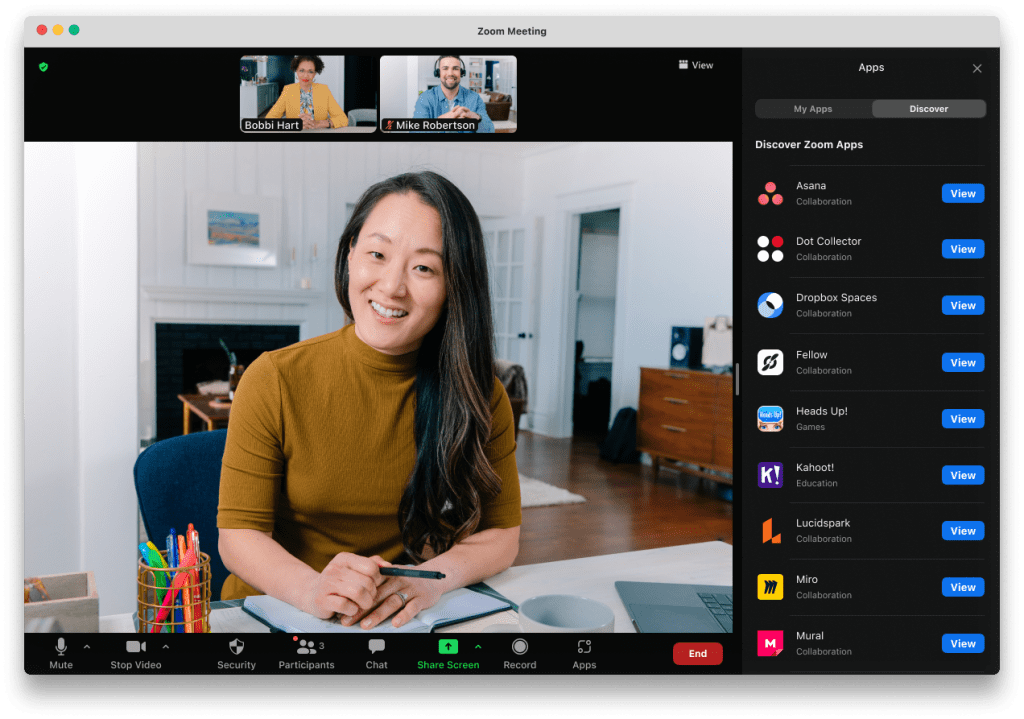
Example: An interview with potential customers may reveal nuanced preferences that are not easily captured through quantitative surveys.
Testing Market Viability through Prototypes and MVPs
Prototyping for Product Validation: Creating prototypes allows you to test the viability of your product before a full-scale launch. Tools like InVision and Sketch enable the development of interactive prototypes for user feedback.
Example: Before launching a new mobile app, a prototype could be tested by a focus group to identify usability issues.
Minimum Viable Product (MVP) Approach: Launching an MVP helps gauge market response with minimal investment. The lean approach allows for quick iterations based on real-world feedback.
5. Evaluating Competition
Understanding and evaluating your competition is a cornerstone of strategic planning for your online business. This comprehensive section explores the various facets of assessing and analyzing competitors in 2024, incorporating real-world examples and verified statistics.
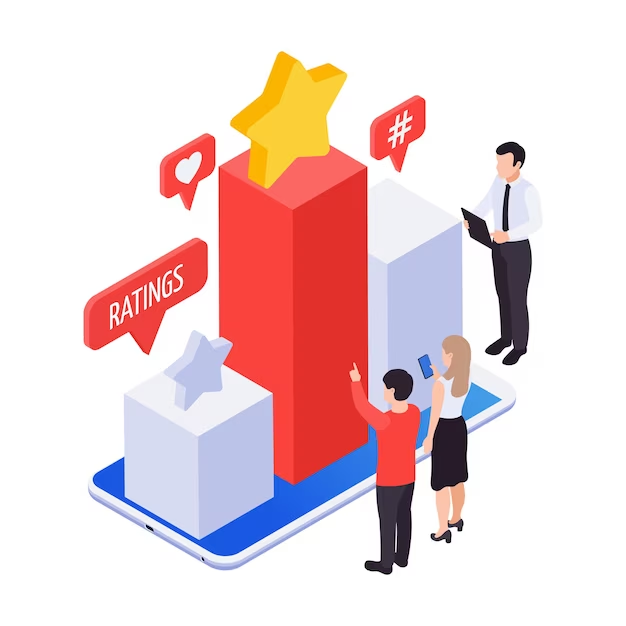
Analyzing Competitors in the Chosen Niche
Identifying Key Competitors: Begin by identifying direct and indirect competitors in your chosen niche. Tools like SimilarWeb and Ahrefs can assist in creating a comprehensive list of competitors by analyzing website traffic and keywords.
SWOT Analysis for Strategic Insight: Conduct a SWOT analysis (Strengths, Weaknesses, Opportunities, Threats) for each competitor. This strategic framework helps in understanding their market position, potential vulnerabilities, and areas where your business can excel.
Example: In the ride-sharing industry, Uber’s strengths in brand recognition and global presence are balanced by weaknesses such as regulatory challenges and occasional public relations issues.
Identifying Gaps and Opportunities for Differentiation
Gap Analysis in Product/Service Offerings: Scrutinize the products or services offered by competitors. Identify any gaps or unmet needs in the market that your business can address. This gap analysis lays the foundation for differentiation.
A majority of consumers, approximately 59%, prefer purchasing new products from brands they are already familiar with, highlighting the importance of differentiating offerings in a competitive market.
Pricing and Value Proposition Comparison: Evaluate the pricing strategies of competitors and assess the perceived value of their offerings.
Consider whether your business can provide better value, either through lower prices, added features, or superior customer service.
Example: Dollar Shave Club disrupted the shaving industry by offering a subscription-based model with affordable, high-quality razors, differentiating itself from traditional brands.
Assessing Digital Presence and Marketing Strategies
Online Visibility and SEO Performance: Analyze competitors’ online visibility through SEO tools like Moz or SEMrush. Examine their keyword strategies, backlink profiles, and overall search engine rankings to understand their digital presence.
The #1 result in Google’s search results receives 31.7% of all clicks, underlining the significance of a strong SEO strategy for online visibility.
Social Media Engagement and Content Strategy: Evaluate competitors’ social media presence, engagement metrics, and content strategies. Identify which platforms they excel on and the type of content that resonates with their audience.
Example: The engagement strategies of brands like Wendy’s on X (formerly Twitter) showcase the power of humorous and interactive content to connect with consumers.

Understanding Customer Reviews and Feedback
Review Aggregation and Sentiment Analysis: Utilize review aggregation tools like Trustpilot or Yelp to understand customer sentiment towards competitors.
Analyze the positive and negative aspects highlighted in reviews to identify areas of improvement or potential advantages for your business.
76% of consumers “regularly” read online reviews when browsing for local businesses, emphasizing the impact of customer feedback on purchasing decisions.
Customer Feedback on Social Media: Monitor social media platforms for customer feedback on competitors. Platforms like Mention or Hootsuite can help track brand mentions and sentiment on social channels.
Example: Airlines often monitor X (formerly Twitter) for immediate feedback from passengers, allowing them to address issues promptly and publicly showcase their commitment to customer satisfaction.
Competitor Benchmarking and Continuous Monitoring
Benchmarking Key Performance Indicators (KPIs): Establish key performance indicators (KPIs) relevant to your industry and benchmark them against competitors. This could include conversion rates, customer acquisition costs, or average order values.
Implementing Continuous Competitor Monitoring: Set up ongoing processes for competitor monitoring. Regularly assess changes in their strategies, product offerings, and customer engagement to adapt your own strategies accordingly.
Example: The technology sector witnesses constant innovations and shifts. Apple’s continuous monitoring of competitors allows them to adapt quickly, ensuring their products remain at the forefront of the market.
6. Assessing Profitability
Evaluating the potential profitability of your online business is a critical aspect of strategic planning.
This extensive section explores the multifaceted considerations involved in assessing profitability, featuring real-world examples and verified statistics to guide your decision-making process.

Understanding the Potential for Revenue in the Chosen Niche
Market Size and Growth Potential: Begin by examining the market size and growth potential within your chosen niche. Utilize market research reports from reputable sources like Statista or IBISWorld to understand the overall market dynamics.
Understanding the market’s growth trajectory is crucial for gauging revenue potential.
Target Audience Spending Habits: Analyze the spending habits of your target audience. Tools like Nielsen or Euromonitor provide insights into consumer behavior, helping you estimate potential revenue streams and tailor your offerings accordingly.
Example: The success of luxury e-commerce platforms like Net-a-Porter is built on understanding and catering to the spending habits of affluent consumers seeking high-end fashion items.
Calculating Costs and Operational Expenses
Identifying Fixed and Variable Costs: Distinguish between fixed and variable costs associated with your online business. Fixed costs, such as website maintenance, remain constant, while variable costs, like advertising, fluctuate with business activities.
Fulfillment and Shipping Expenses: Factor in fulfillment and shipping costs, especially if your business involves physical products. Tools like Shippo or ShipStation can help estimate shipping expenses based on your product dimensions and destinations.
Example: Companies like Amazon Prime strategically use shipping costs as a competitive advantage, offering fast and reliable delivery to incentivize customer loyalty.

Analyzing Pricing Strategies and Competitive Landscape
Competitor Pricing Benchmarking: Conduct thorough competitor benchmarking to understand prevailing pricing strategies within your niche. Evaluate whether your pricing aligns with industry standards or offers a unique value proposition.
Dynamic Pricing and Promotions: Explore the feasibility of dynamic pricing models and promotional strategies. Dynamic pricing tools like Prisync or Wiser adapt pricing in real-time based on market conditions, competition, and demand.
Example: Airlines often employ dynamic pricing, adjusting ticket prices based on factors like demand, day of the week, and proximity to the travel date.
Estimating Return on Investment (ROI) and Profit Margins
ROI Calculation for Marketing Campaigns: Evaluate the return on investment for your marketing efforts. Tools like Google Analytics or HubSpot can help track conversions, allowing you to assess the effectiveness of your marketing campaigns.
Determining Profit Margins: Calculate your profit margins by deducting total costs from revenue and dividing by revenue. This helps assess the percentage of profit generated per unit sold.
Example: The fast-fashion industry, led by companies like Zara, often operates with lower profit margins but compensates through high sales volumes and rapid inventory turnover.
Considering Long-term Sustainability and Scalability
Sustainability of Revenue Streams: Evaluate the sustainability of your chosen revenue streams over the long term. Consider how market trends, consumer preferences, and technological advancements might impact your revenue model.
Example: Subscription-based models, like those adopted by streaming services such as Netflix, showcase the sustainability of recurring revenue streams.
Scalability of Operations: Assess the scalability of your business model. Ensure that as your business grows, your operations can efficiently handle increased demand without compromising quality or incurring disproportionately higher costs.
Incorporating Risk Mitigation Strategies
Identifying and Mitigating Risks: Conduct a thorough risk assessment, identifying potential threats to your business. This could include external factors like economic downturns or internal risks such as supply chain disruptions. Implement strategies to mitigate these risks.
Example: Businesses in the travel industry learned the importance of risk mitigation during the COVID-19 pandemic, prompting many to diversify revenue streams and enhance contingency plans.
Emergency Fund Allocation: Allocate a portion of your revenue to an emergency fund. This financial buffer can provide stability during unforeseen circumstances, allowing your business to weather challenges without compromising its long-term viability.
7. Narrowing Down Your Niche
Choosing a well-defined and focused niche is crucial for the success of your online business.
This comprehensive section explores the strategic steps involved in narrowing down your niche, featuring real-world examples and verified statistics to guide your decision-making process.

Understanding the Importance of a Niche
Reducing Competition and Enhancing Visibility: A well-defined niche helps your business stand out in a crowded marketplace. By narrowing down your focus, you reduce direct competition and make it easier for your brand to be noticed by your target audience.
Building a Dedicated Customer Base: A niche allows you to connect with a more specific and dedicated audience. By addressing the unique needs or preferences of this audience, you have the opportunity to build a loyal customer base.
Example: The success of niche subscription boxes like Birchbox or BarkBox illustrates how catering to specific interests creates a devoted customer following.
Assessing Market Potential and Demand
Utilizing Keyword Research Tools: Conduct thorough keyword research using tools like Google Keyword Planner or Ubersuggest. Identify search volumes and competition levels for keywords related to your potential niche.
92.42% of keywords get ten monthly searches or fewer, highlighting the importance of targeting specific and less competitive keywords.
Google Trends for Seasonality and Interest Patterns: Analyze trends and seasonality using Google Trends. Understanding when interest in your potential niche peaks or wanes can influence your decision on the viability of the niche.
Example: The fitness industry experiences a surge in interest during the New Year as people make resolutions, showcasing the importance of timing in niche selection.
Analyzing Competitor Landscape within the Niche
Competitor Strengths and Weaknesses: Evaluate the strengths and weaknesses of competitors within your potential niche. This analysis helps you identify opportunities for differentiation and areas where your business can excel.
Unique Value Proposition (UVP) Differentiation: Determine your Unique Value Proposition (UVP) by identifying what sets your potential business apart from competitors in the niche. This could be based on product features, pricing, or customer experience.
Example: Airbnb differentiates itself in the accommodation niche by offering unique and local experiences, setting it apart from traditional hotel options.
Assessing Profitability and Monetization Strategies
Cost-Effectiveness of Operations: Evaluate the cost-effectiveness of operating within the chosen niche. Consider factors like product sourcing, marketing expenses, and operational costs to ensure profitability.
Monetization Potential: Assess the potential for monetization within your niche. This could include exploring different revenue streams such as e-commerce sales, affiliate marketing, or subscription models.
Example: Blogs or content websites within the personal finance niche often monetize through affiliate marketing by recommending financial products.
Aligning with Passion and Expertise
Passion-Driven Niche Selection: Consider aligning your niche with your personal passion and expertise. Choosing a niche you are passionate about can contribute to your motivation and resilience in building and growing your online business.
Example: Food bloggers who are passionate about specific cuisines or dietary lifestyles often find success by connecting with like-minded audiences.
Expertise-Based Niche Selection: Leverage your expertise or skills when selecting a niche. Businesses that align with your knowledge base can enhance your credibility and set you apart as an authority in the chosen field.
Testing and Validating Your Niche Concept
Minimum Viable Product (MVP) Testing: Implement MVP testing to validate the market demand for your niche concept. Launch a simplified version of your product or service to gather real-world feedback.
Example: Dropbox initially validated its cloud storage concept through an MVP, allowing users to test and provide feedback on the basic file-sharing service.

Gauging Initial Customer Response: Monitor and gauge the response of your initial customers. Their feedback and behaviour will provide insights into whether your niche concept resonates with your target audience.
Building a Distinctive Brand Identity
Brand Positioning and Messaging: Develop a distinctive brand positioning within your niche. Craft messaging that communicates your brand values and resonates with the specific needs and aspirations of your target audience.
Example: Tesla’s brand identity within the electric car niche is built on innovation, sustainability, and a commitment to a cleaner future.
Visual Branding and Aesthetics: Invest in visual branding elements that convey the personality and essence of your brand. Consistent and appealing aesthetics contribute to brand recognition and customer trust.
Consistent brand presentation across all platforms can increase revenue by up to 23%.
8. Testing and Validating Your Niche
Testing and validating your niche is a critical phase in the journey of establishing a successful online business.
This comprehensive section explores the strategic steps involved in effectively testing and validating your niche, featuring real-world examples and verified statistics to guide your decision-making process.

The Significance of Testing and Validation
Minimizing Business Risks: Testing and validating your niche before a full-scale launch help mitigate potential risks. It allows you to assess market demand, refine your offerings, and make informed decisions based on real-world feedback.
In 42% of cases, failed startups created a product or service that didn’t meet a real felt need in the market, highlighting the importance of validating business concepts.
Iterative Improvement: A testing and validation phase enables iterative improvement. By collecting feedback and insights early on, you can make necessary adjustments to enhance your product or service, increasing its chances of success in the market.
Implementing Minimum Viable Product (MVP) Testing
Introduction to MVP Testing: The concept of Minimum Viable Product (MVP) involves launching a simplified version of your product or service to gather real-world feedback. It allows you to test key assumptions and validate your niche concept with minimal investment.
Key Components of MVP Testing:
- Core Functionality: Include the essential features that demonstrate the core value of your product or service.
- User Feedback Mechanism: Implement a system to collect user feedback, whether through surveys, feedback forms, or direct communication channels.
- Rapid Development: Focus on quick and efficient development to get your MVP to market promptly.
Gauging Initial Customer Response
Monitoring User Engagement: Track user engagement metrics within your MVP. Analyze how users interact with your product or service, paying attention to key performance indicators (KPIs) like time spent, pages visited, or actions taken.
Example: Google Analytics is a powerful tool for monitoring user engagement, providing insights into user behavior on websites or digital platforms.
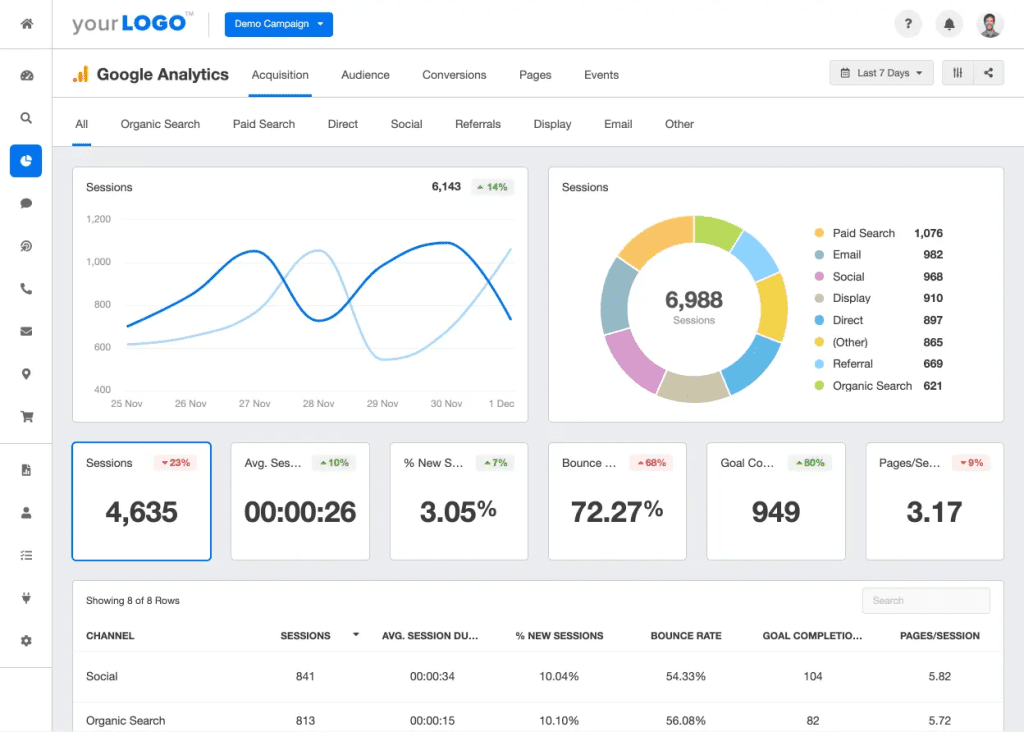
Analyzing User Feedback: Actively seek and analyze user feedback. Leverage feedback platforms, customer surveys, or direct communication channels to understand what users appreciate and areas that may need improvement.
Utilizing A/B Testing for Refinement
Introduction to A/B Testing: A/B testing involves comparing two versions of a webpage or product to determine which performs better. It allows you to refine elements based on user preferences and optimize for the highest engagement or conversion rates.
Example: E-commerce platforms often use A/B testing for elements like call-to-action buttons, images, or pricing to identify the most effective variations.
Elements for A/B Testing:
- Headlines and Copy: Test different headlines and copy variations to identify messaging that resonates with your audience.
- Visual Elements: Experiment with images, videos, or graphics to understand the visual elements that drive engagement.
- User Interface (UI) Design: Test variations in UI elements to optimize for user experience.
Social Media Testing and Audience Response
Social Media Engagement Metrics: Leverage social media platforms to test audience response. Analyze engagement metrics such as likes, shares, comments, and click-through rates to gauge interest in your niche.
Example: Instagram polls or X (formerly Twitter) surveys can provide real-time insights into audience preferences and opinions.
Paid Social Advertising for Validation: Utilize paid social advertising to test your niche concept. Platforms like Facebook and Instagram allow you to target specific demographics, helping you assess the resonance of your offerings with your target audience.
Implementing Landing Page Testing for Conversion Optimization
Creation of Landing Pages: Develop dedicated landing pages to test variations of your niche concept. Landing pages allow you to present your value proposition and offerings while testing different elements for optimal conversion.
Example: Unbounce and Instapage are tools that facilitate the creation and testing of landing pages for marketing campaigns.
Testing Elements on Landing Pages:
- Call-to-Action (CTA): Experiment with different CTAs to determine which prompts the desired user action.
- Visuals and Imagery: Test the impact of visuals, graphics, or product images on user engagement.
- Value Proposition: Refine your value proposition based on user response to different messaging.
The conversion rate for landing pages is 9.7%.
Collecting and Analyzing Quantitative and Qualitative Data
Quantitative Data Analysis: Analyze quantitative data such as user metrics, conversion rates, and engagement analytics to draw statistical insights. Tools like Google Analytics or Hotjar can assist in quantitative data analysis.
Qualitative Data Interpretation: Interpret qualitative data gathered from user feedback, surveys, or A/B testing. Understand the sentiments, preferences, and qualitative insights that may not be captured through quantitative metrics alone.
Example: User testimonials or comments on social media can provide qualitative insights into customer experiences and preferences.
Incorporating Iterative Changes Based on Feedback
Continuous Improvement Cycle: Implement an iterative process of making changes based on feedback and data analysis. This continuous improvement cycle ensures that your niche concept evolves to meet the evolving needs and expectations of your audience.
Example: Software development follows an iterative process with frequent updates and improvements based on user feedback, ensuring the product remains relevant and effective.
Agile Methodology for Flexibility: Adopt an agile methodology for your business operations. The agile approach emphasizes flexibility, collaboration, and a willingness to adapt, allowing you to respond quickly to changing market dynamics.
Agility improved financial performance by 20 to 30 percent.
9. Building Your Brand within the Niche
Establishing a strong and distinctive brand within your niche is paramount to the success of your online business.
This comprehensive section explores the strategic steps involved in building your brand, incorporating real-world examples and verified statistics to guide your brand-building journey.

The Crucial Role of Brand Building
Brand as a Business Asset: Your brand is more than a logo; it’s a business asset that represents your identity, values, and the promise you make to your customers. Building a robust brand within your niche is key to creating lasting impressions and fostering customer loyalty.
Brand Differentiation in a Saturated Market: In a saturated online marketplace, brand differentiation is a competitive advantage. A well-crafted brand distinguishes your business, making it memorable and resonant with your target audience.
Example: Apple’s brand differentiation in the tech industry is built on sleek design, user-friendly interfaces, and a focus on innovation, setting it apart from competitors.
Crafting a Compelling Brand Identity
Defining Brand Values and Mission: Clearly articulate your brand values and mission. Identify the core principles that guide your business decisions, and communicate them consistently across all brand touchpoints.
Example: Patagonia’s brand is synonymous with environmental sustainability. Their mission to “build the best product, cause no unnecessary harm, use business to inspire and implement solutions to the environmental crisis” is deeply embedded in their brand identity.
Creating a Memorable Brand Name and Logo: Your brand name and logo are pivotal elements of your identity. Ensure they are memorable, reflective of your niche, and easily recognizable. Consistency in visual elements fosters brand recall.
A logo that stands out from the competition helps consumers easily identify and recall the brand.
Understanding Your Target Audience
Developing Customer Personas: Create detailed customer personas to understand the demographics, preferences, and pain points of your target audience. Tailor your brand messaging and offerings to align with the needs of your ideal customers.
Example: Nike’s understanding of its target audience, including athletes and fitness enthusiasts, is evident in its motivational brand messaging and sponsorships.
Utilizing Psychographics for Deeper Insights: Go beyond demographics and delve into psychographics—understanding the attitudes, interests, and values of your audience. This deeper understanding allows for more nuanced and effective brand communication.
Creating Consistent Brand Messaging
Crafting a Compelling Brand Story: Develop a brand story that resonates with your audience. A compelling narrative adds an emotional dimension to your brand, creating a connection that goes beyond transactions.
Consistent Tone and Voice Across Channels: Maintain a consistent tone and voice in all brand communications. Whether on your website, social media, or marketing materials, a unified voice enhances brand recognition and reinforces your brand’s personality.
Building an Engaging Online Presence
Optimizing Your Website for Brand Experience: Your website is a primary touchpoint for your brand. Optimize it for a seamless user experience, aligning design elements with your brand identity.
Clear navigation and engaging visuals contribute to a positive brand experience.
Example: Airbnb’s website reflects its brand ethos of unique and local experiences, featuring vibrant visuals and user-friendly navigation.
Social Media Branding and Engagement: Leverage social media platforms for brand building. Consistent branding, engaging content, and responsive interaction with followers contribute to a strong online presence.
People spend an average of 2 hours and 24 minutes on social media every day.
Implementing Influencer Marketing Strategies
Identifying Relevant Influencers: Collaborate with influencers within your niche. Identify individuals or entities with a significant following and credibility in your industry. Their endorsement can elevate your brand’s visibility.
Example: Fashion brands often collaborate with influencers to showcase their products, leveraging the influencer’s audience and style.
Measuring Influencer Marketing ROI: Implement tracking mechanisms to measure the return on investment (ROI) of influencer marketing. Analyze metrics such as engagement, website traffic, and conversions attributed to influencer collaborations.
Fostering Community Engagement
Creating Branded Community Platforms: Establish branded community platforms, such as forums or social media groups, to foster engagement among your audience. These platforms provide a space for discussions, feedback, and a sense of belonging.
Example: Harley-Davidson’s HOG (Harley Owners Group) is a branded community that cultivates a sense of camaraderie among motorcycle enthusiasts.
User-Generated Content (UGC): Encourage user-generated content by inviting your audience to share their experiences with your brand. UGC serves as authentic testimonials and contributes to a sense of community.
Evaluating Brand Performance and Metrics
Key Performance Indicators (KPIs) for Branding: Define key performance indicators specific to your brand-building efforts. Metrics such as brand mentions, sentiment analysis, and customer satisfaction scores provide insights into brand performance.
Utilizing Brand Health Surveys: Conduct brand health surveys to assess how your brand is perceived in the market. Gather feedback on brand awareness, perceived value, and likelihood of recommendation.
Example: Net Promoter Score (NPS) surveys measure the likelihood of customers recommending a brand to others, providing a metric for brand advocacy.
Scaling Branding Strategies for Growth
International Branding Considerations: If targeting an international audience, consider cultural nuances and adapt your branding strategies accordingly. Localized branding ensures resonance with diverse audiences.
Example: McDonald’s adapts its branding and menu to align with cultural preferences in different countries, showcasing a global brand with local relevance.
Brand Extensions and Diversification: Explore opportunities for brand extensions or diversification. Introducing new products or services under your established brand can leverage existing brand equity.
Conclusion
Navigating the Concept of a Niche
In the pursuit of establishing a flourishing online business in 2024, understanding the intricacies of a niche is the foundational step.
As we’ve explored, a niche is not merely a segment of the market; it is a carefully defined space where your business can thrive amidst competitors.
By grasping the concept of a niche, you gain a strategic advantage, allowing you to tailor your offerings to a specific audience and stand out in the crowded digital landscape.
Analyzing Market Trends in 2024
The ability to anticipate and adapt to market trends is paramount for success in the ever-evolving online business realm.
As we’ve delved into analyzing market trends in 2024, leveraging data and statistics, businesses can align their strategies with the shifting dynamics of consumer preferences, emerging technologies, and global economic factors.
Staying abreast of these trends positions your online business to not only meet current demands but also anticipate future needs, fostering long-term relevance and resilience.
Identifying Your Passion and Expertise
Connecting your online business with your passion and expertise is more than a personal preference; it’s a strategic move that enhances your chances of sustainable success.
By aligning your business with what you love and know best, you not only bring authenticity to your brand but also leverage your inherent understanding of the niche.
The synergy between passion and expertise becomes a driving force, fueling your commitment and resilience as you navigate the challenges and triumphs of online entrepreneurship.
Conducting Market Research
In the dynamic landscape of 2024, conducting thorough market research emerges as a linchpin for informed decision-making.
By employing robust research methodologies, including quantitative and qualitative analysis, businesses gain insights into consumer behavior, competitive landscapes, and untapped opportunities.
The data-driven approach not only aids in niche selection but also guides subsequent strategic decisions, ensuring a solid foundation for sustainable growth in the competitive online arena.
Evaluating Competition
A deep dive into evaluating competition unveils valuable insights that go beyond identifying rivals.
It involves dissecting competitor strategies, discerning strengths and weaknesses, and strategically positioning your online business for a competitive edge.
Armed with this intelligence, businesses can fine-tune their offerings, pricing, and marketing approaches, ensuring they carve a unique space within the niche and capture the attention of their target audience.
Assessing Profitability
While passion fuels the entrepreneurial spirit, the backbone of a successful online business lies in its profitability.
In this section, we’ve explored the intricacies of assessing profitability, considering market size, target audience spending habits, and operational costs.
By integrating these considerations into your business model, you create a roadmap for sustainable revenue generation and financial viability, ensuring your online venture thrives in the competitive landscape of 2024.
Narrowing Down Your Niche
The process of narrowing down your niche involves precision and strategic decision-making. As we’ve discussed, a well-defined niche not only reduces competition but also establishes a strong connection with a dedicated audience.
Drawing inspiration from real-world examples, businesses can navigate this process with confidence, honing in on a niche that aligns with their strengths, market demand, and unique value proposition, setting the stage for focused and impactful market penetration.
Testing and Validating Your Niche
In the ever-changing digital landscape, testing and validating your niche concept are indispensable steps for mitigating risks and ensuring market fit.
Through the implementation of Minimum Viable Product (MVP) testing, A/B testing, and social media engagement strategies, businesses can gather real-world feedback.
This iterative approach not only refines the niche concept but also sets the stage for adaptive and responsive strategies that resonate with the dynamic needs of the audience.
Building Your Brand within the Niche
Building a brand within your niche is not just about aesthetics; it’s about creating a distinct identity that resonates with your target audience.
By crafting a compelling brand story, maintaining a consistent brand voice, and leveraging influencers and community engagement, businesses can foster brand loyalty.
As we’ve explored, a strong brand is an invaluable asset, influencing customer decisions and fostering a community that transcends transactions.
If you are looking for a top-class digital marketer, then book a free consultation slot here.
If you find this article useful, why not share it with your friends and business partners, and also leave a nice comment below?
We, at the AppLabx Research Team, strive to bring the latest and most meaningful data, guides, and statistics to your doorstep.
To get access to top-quality guides, click over to the AppLabx Blog.
People also ask
How do I choose a niche for my online business?
Choosing a niche for your online business involves a strategic blend of passion, market demand, and expertise. Identify your interests, research market trends, assess competition, and pinpoint an underserved audience. Aligning your unique strengths with a viable market ensures a niche that resonates and thrives.
How do I find my business niche?
Discovering your business niche involves a systematic approach. Identify your passions, assess market needs, analyze competition, and seek a unique intersection. Leverage data, conduct market research, and align your expertise to pinpoint a niche where your business can thrive.
What is the best niche to sell online?
The best online niche combines your passion, market demand, and profit potential. Explore areas aligned with your expertise, assess consumer needs, and analyze competition. Whether it’s unique handmade crafts, tech solutions, or specialized services, the ideal niche resonates with your skills and captivates your target audience.




































